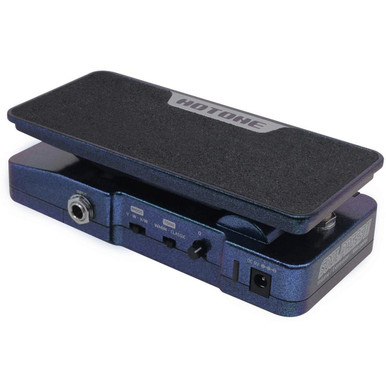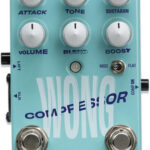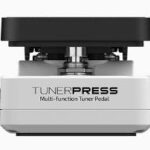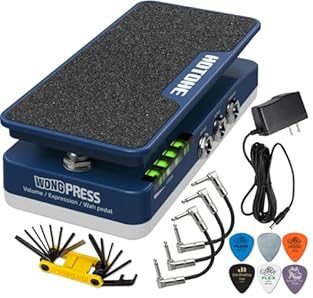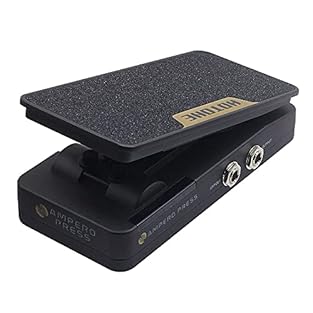Description
Hotone Guitar Pedals are fresh in, this is a New one & the Just Pedals team think it is a very nice one too. Good news ! This can be delivered straight to your door, quickly and securely, anywhere in the UK & Europe. For more info on this New Guitar Pedals, please read on for full details, demos, videos, reviews and order online.
Renowned international funk guitar maestro and 63rd Grammy nominee Cory Wong is celebrated for his unique playing style and unmistakable crisp tone. Known for his expressive technique, he’s been acclaimed across the globe by all audiences for his unique blend of energy and soul.
In 2022, Cory discovered the multi-functional Soul Press II pedal from Hotone and instantly fell in love. Since then, it has become his go-to pedal for live performances.
Now, two years later, the Hotone team has meticulously crafted the Wong Press, a pedal tailored specifically for Cory Wong. Building on the multi-functional design philosophy of the Soul Press series, this new pedal includes Cory’s custom requests: a signature blue and white color scheme, a customized volume pedal curve, an adjustable wah Q value range, and travel lights that indicate both pedal position and working mode.
Crafted by artists and engineers, born for musicality.
Cory Wong has a near-perfectionist approach to musicality: “I worked closely with Hotone’s engineers to fine-tune the pedal’s parameters and frequency range, making sure the tone feels more musical and less mechanical.”
Cory’s near-perfect pursuit of tone and pedal feel presented a significant challenge for our development team. After countless adjustments to the Q value range, Hotone engineers achieved the precise WAH tone Cory desired while minimizing the risk of accidental Q value changes affecting the sound. Additionally, based on Cory’s feedback, the volume control was fine-tuned for a smoother, more musical transition, enhancing the overall feel of volume swells.
Iconic Blue and White: Cory Wong The Essence of Classic.
This vintage navy-inspired blue and white color scheme, combined with Cory Wong’s signature logo, creates a design that perfectly blends the pedal’s aesthetic with the artist’s unique style. The Wong Press logo also reflects his distinctive vibe, making the design and the Cory’s personality seamlessly connected.
Four-in-One Functionality: Powerful Yet Compact.
The Wong Press builds on the features of the Soul Press II, with its expertly crafted surface design that delivers an exceptional foot control experience while remaining compact and portable.
Upgraded Dual-Color Travel Indicator: Clear Visibility on Stage.
The team also upgraded the iconic travel lights of the Soul Press II to dual-color travel lights—blue for Wah mode and green for Volume mode—making live performances more intuitive and visually striking!
Built to Conquer the Demands of a World Tour: Your Rock-Solid Partner.
It’s worth mentioning that the Wong Press has already accompanied Cory Wong on an intense world tour and passed the test with flying colors. Cory says, “I did something else too. I took this pedal’s test version and put it through some unbelievable real-world testing. I took it all around the world, threw it on planes, tossed it in the trunk of cars—all packed in a suitcase, not even in a Pelican or hard case—just to see if it could handle the durability I needed. I can guarantee it can!”
In line with the Hotone Design Inspiration philosophy, the Wong Press represents the perfect blend of design and inspiration. Now, musicians can channel their inner Cory Wong and enjoy the freedom and joy of playing with the Wong Press!
Features
- Cory Wong’s signature Press pedal featuring his personal specs
- True Bypass
- 4 in 1 functionality (volume, expression, wah, volume/wah)
- New dual-color STATUS LED strip indicating pedal mode and position in real time
- Cory’s custom volume curve and wah Q control
- Classic-voiced wah tone with flexible tonal range
- Active volume design for keeping lossless tone
- Separate tuner and expression outputs for more connection possibilities
- 9V DC or 9V battery power supply
Specifications
- Pot Resistance (EXP OUT): 10kΩ
- Input Impedance: 1MΩ
- Output Impedance: 100Ω
- Wah Range Selector (TONE): WARM—290Hz to 1.4kHz – CLASSIC—360Hz to 1.8kHz
- Current Consumption: Max 30mA
- Dimensions: 81mm (W) x 162mm (D) x 51mm (H)
- Weight: 512g

